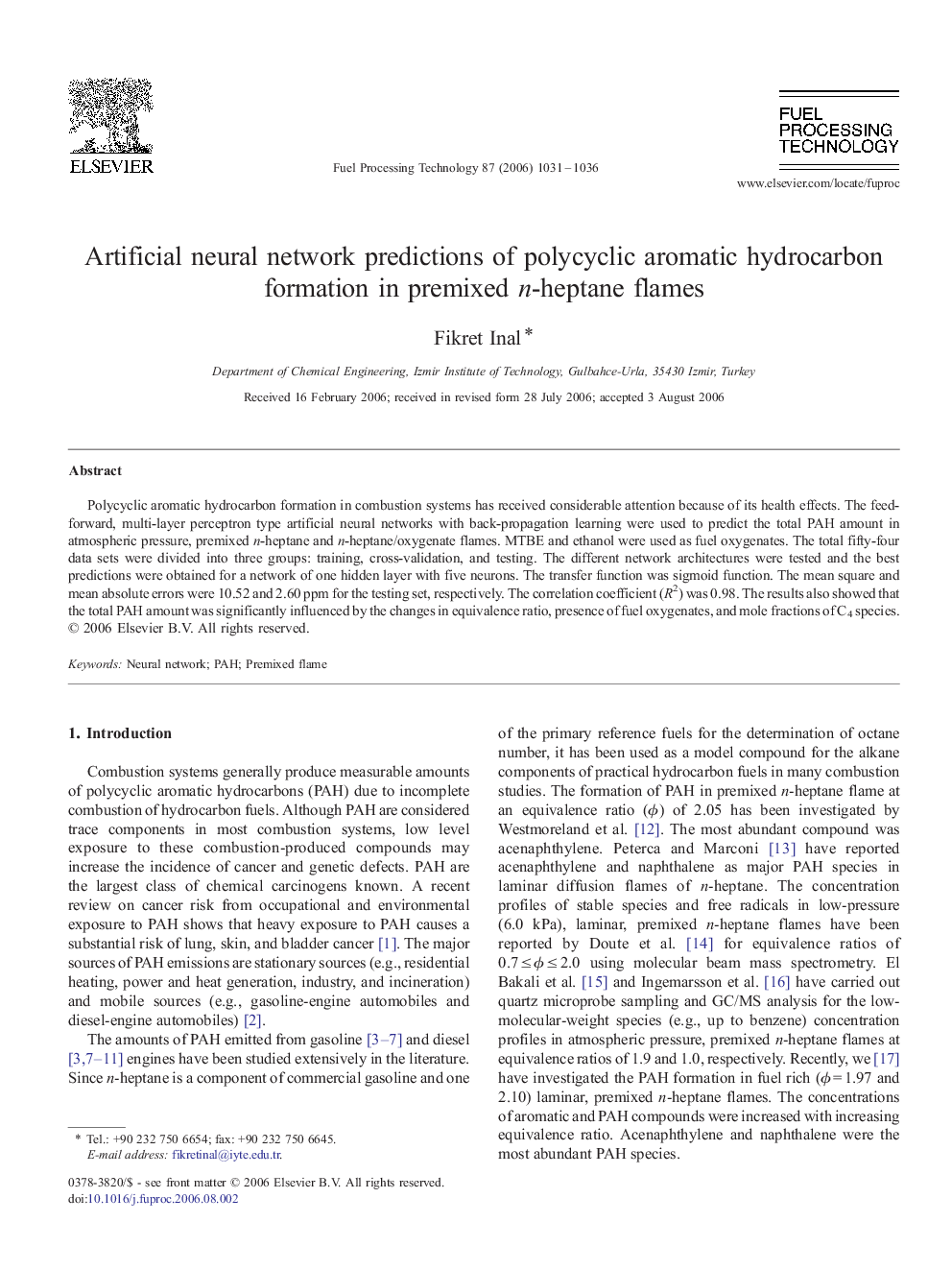| Article ID | Journal | Published Year | Pages | File Type |
|---|---|---|---|---|
| 211192 | Fuel Processing Technology | 2006 | 6 Pages |
Polycyclic aromatic hydrocarbon formation in combustion systems has received considerable attention because of its health effects. The feed-forward, multi-layer perceptron type artificial neural networks with back-propagation learning were used to predict the total PAH amount in atmospheric pressure, premixed n-heptane and n-heptane/oxygenate flames. MTBE and ethanol were used as fuel oxygenates. The total fifty-four data sets were divided into three groups: training, cross-validation, and testing. The different network architectures were tested and the best predictions were obtained for a network of one hidden layer with five neurons. The transfer function was sigmoid function. The mean square and mean absolute errors were 10.52 and 2.60 ppm for the testing set, respectively. The correlation coefficient (R2) was 0.98. The results also showed that the total PAH amount was significantly influenced by the changes in equivalence ratio, presence of fuel oxygenates, and mole fractions of C4 species.
